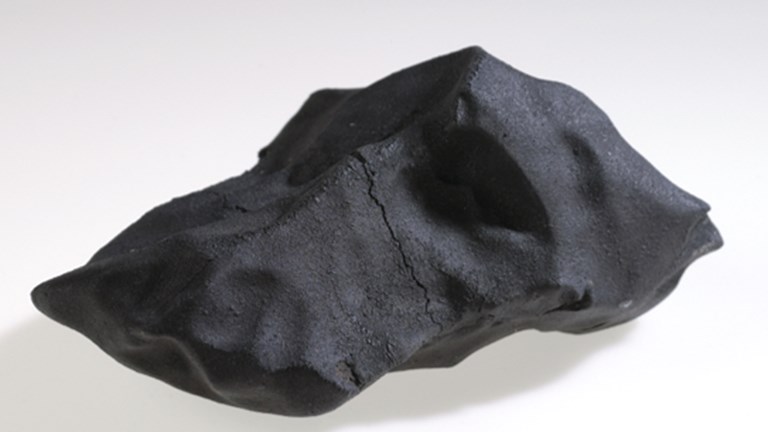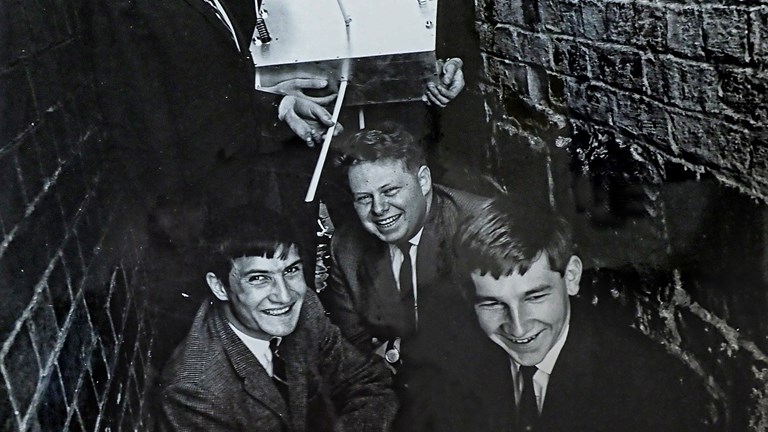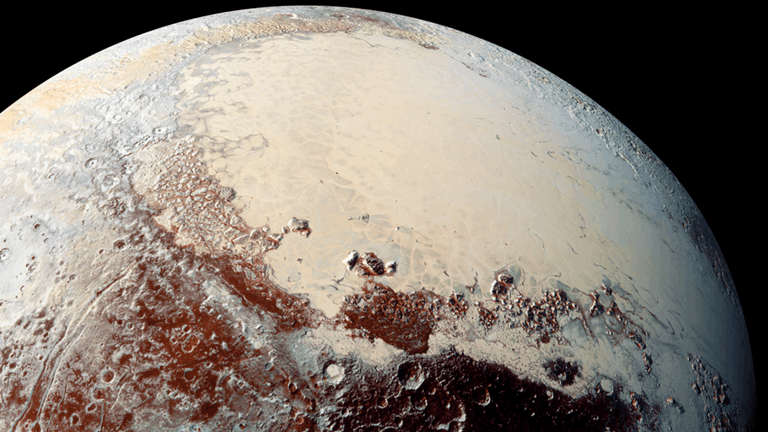Picturing the solar system: a tale of astronomical change
How has our knowledge of the solar system changed over the centuries? And why, for most of human history, have astronomers believed the Earth was at the centre of the universe?
When you look up at the night sky with the naked eye, what do you see?
If it’s a clear night possibly a couple of planets, some constellations and, the spiral arm of the Milky Way stretching out across the heavens.
But your understanding of the universe, and our place in it, comes from a foundation of knowledge built over generations of human history.
‘Astronomy is one of the oldest sciences,’ says Dr Tanya Hill, Senior Curator of Astronomy at the Melbourne Planetarium.
‘As soon as we could, people have been looking up and exploring the sky, watching the stars and trying to understand what our place is, in this vast universe.’
But putting all the pieces together to form an accurate model of our solar system was not a simple undertaking.
Especially as these early astronomers were doing it without the assistance of telescopes.
The existence of galaxies and the concept of a universe, as we think of it today, had also not yet been established.
The solar system was the entirety of known space.
The geocentric, or Earth-centred, system

The idea that Earth lies at the heart of the solar system may seem antiquated now, but the geocentric model reigned as the prevailing theory for longer than any other.
‘One of the first models of our solar system was put forward 2000 years ago by the ancient Greek astronomer Ptolemy,’ says Tanya.
While other scientists had theorized an Earth-centred model of the universe before, it was Claudius Ptolemy of Alexandria who had most developed it by about 150 CE.
He placed the Earth at the centre of the universe, orbited by the Moon, Mercury, Venus, then the Sun, Mars, Jupiter, and Saturn. These were the only planets known at that time and to complete the system it was surrounded by a sphere of fixed stars.
Ptolemy’s geocentric model was based on meticulous observations that he made of the planets, and particularly their movement across the sky.
The problem was that planets don’t move in a linear fashion—they speed up, slow down, and sometimes even change direction.
‘We call that retrograde motion,’ explains Tanya.
So simply drawing circular orbits around the Earth, as Plato and other ancient Greek philosophers had done before, was not going to work for Ptolemy.
‘But by adding epicycles—where the planets move on little circles, and then those circles orbit around the Earth—Ptolemy had developed quite an accurate geocentric model of our solar system.’
It was a complex system of intricately calculated relationships that used imaginary focal points in space to account for planetary motion.
While it looked a little unwieldy, Ptolemy’s model could be used to predict where the planets would be at a future date.
And it was this usefulness that kept it going for the next 1500 years, even when other ideas came along that eventually proved more accurate.
The Heliocentric, or Sun-centred, system

The 16th century Polish astronomer Nicolaus Copernicus is often cited as the origin of the heliocentric model of the solar system.
Copernicus published his proposal in 1543, ‘But Copernicus wasn’t the first to consider this,’ says Tanya.
‘There was an ancient Greek astronomer, Aristarchus who also put forward the idea.’
Aristarchus of Samos lived during the 3rd century BCE, and believed the Earth rotated on its axis and orbited around the Sun.
It was revolutionary, but ‘His idea wasn’t accepted at the time and neither was Copernicus’ 2000 years later,’ says Tanya.
‘One of the main issues is that with science we need to have observations and experiments that we can test.’
In developing his heliocentric model, Copernicus returned to the perfectly circular orbits of pre-Ptolemaic astronomers.
‘Even though Copernicus’ model might look very similar to the solar system as we know today, it wasn’t as accurate as Ptolemy’s, and it was Ptolemy’s which did a better job of predicting the position of the planets,’ explains Tanya.
‘So, there was no incentive to switch from the geocentric to the heliocentric model.’
Not yet, anyway.
The Tychonic, or hybrid, system

The scientific community of the 16th century was unconvinced of the merits of a Sun-centred model, but there was a Danish astronomer who took another approach.
‘Tycho Brahe was one of the last astronomers to observe the movement of the planets before the invention of the telescope,’ says Tanya.
Brahe used purpose-built observatories on an island between Denmark and Sweden, to make meticulous observations of the night sky.
But rather than restrict himself entirely to the geocentric or heliocentric models, Brahe combined what he considered to be the strongest elements of each.
‘In his model of the solar system, Earth remains in the centre, and you have the Sun and Moon orbiting around the Earth but orbiting around the Sun are all the other planets,’ says Tanya.
‘Brahe had found an interesting way to join the geocentric and heliocentric models together into one.’
And he wasn’t the only one.
An earlier Indian Astronomer, Nilakantha Somayaji, also put forward a similar system in 1501.
But, like the heliocentric ideas of Aristarchus and Copernicus, neither of these hybrid models succeeded the Ptolemaic system.
Instead Brahe’s greatest legacy was his modernising of the science of astronomy and the observations and calculations that were picked up by his student, Johannes Kepler.
‘It really is Kepler that we can thank for the model of the solar system that we have today,’ says Tanya.
Kepler and heliocentrism

Kepler was a German astronomer who, unlike his teacher, was a firm believer in the heliocentric model.
In analysing Brahe’s observations, Kepler came up with a brilliant solution to the problem that had caused so much consternation to astronomers before him.
‘The important thing that Kepler did, was that he rejected the idea that the heavens had to be perfect and that planetary orbits had to be circular,’ explains Tanya.
‘He squished those circular orbits creating ellipses.’
In doing so, Kepler drastically simplified the model of the solar system, doing away with Ptolemy’s epicycles, while still accounting for retrograde motion.
‘Using straightforward calculations, it was possible to accurately predict the position of the planets and also explain their movement across the sky,’ says Tanya.
Elliptical orbits formed the first of Kepler’s three laws of planetary motion.
The second of his laws explained that planets do not maintain a constant speed throughout their orbit.
‘If a planet is orbiting the Sun on a circular orbit, then it’s always the same distance from the Sun,’ explains Tanya
‘But that’s not the case with Kepler’s elliptical orbits.’
What’s more, the Sun doesn’t sit at the centre of the elliptical orbits but is offset, so at certain times planets will be closer to or further away from the Sun.
When a planet is further away from the Sun it slows down, but it speeds up again when it’s nearer to the Sun.
Kepler’s third law states that planets closer to the Sun will orbit faster than those further away.
In Earth’s case an orbit takes about 365 days, whereas Mercury completes an orbit in just 88 days and Saturn needs 10,759 days—almost 30 years—to do the same.
Kepler published the first of these laws in 1609 but it took some time, and outside assistance, to cement his model as the most scientifically accurate model of the solar system.
Fortuitously, around the same time a Dutch spectacle maker named Hans Lipperhey applied for a patent for a new device to expand human vision—the telescope.
Galileo and the expanding solar system
Beginning in 1609, Italian astronomer Galileo Galilei was the first to describe what he saw in the heavens, with this newly invented telescope.
In January 1610, he observed four moons orbiting Jupiter, proving that Earth was not the centre of all motion in the solar system.
He later saw the phases of Venus, showing that the planet revolved around the Sun, and spots on the surface of the Sun, which moved over time.
Like Kepler, he concluded that the Sun—not the Earth—was the centre of, what was at that time, the known universe.
From his illustrations concerning Jupiter, it appears Galileo also observed Neptune several times in December 1612 and January 1613.
It’s possible he may even have recognised Neptune as a new planet, but there is not enough evidence to say for certain.
Had he done so, Galileo would have been the first to identify a new planet—the other six are all visible to the naked eye and had been known for millennia.
Instead, the discovery of the solar system’s next planet had to wait until March 1781, when German astronomer William Herschel first observed Uranus and realised that it moved differently to the stars he was attempting to survey.
It also prompted the discovery of Neptune 65 years later.
As astronomers tracked Uranus they noticed a series of irregularities in its orbit that could be explained if another planet was tugging on Uranus and disturbing its motion.
Two astronomers, Urbain Le Verrier in France and John Couch Adams in England, used Isaac Newton’s law of universal gravitation (which was informed by Kepler’s own laws of planetary motion), to attempt to calculate the position of the unknown planet.
Neptune came to light in September 1846 when German astronomer Johann Gottfried Galle used those calculations (which were accurate to within one degree), to truly discover the solar system’s eighth planet.
Uncovering the universe
‘Around the early part of the 1900s our understanding of the universe exploded,’ says Tanya.
By the 20th century, space was known to contain the objects of the solar system—the Sun, planets, moons, asteroids and comets—together with the stars.
Astronomers had also found faint patches of light that could possibly be other solar systems beginning to form.
‘But in 1924, Edwin Hubble was the first to show that those faint, fuzzy objects in the sky were actually distant galaxies,’ explains Tanya.
Humanity’s idea of space shifted—no longer limited to a single solar system but to a universe filled with galaxies.
Hubble was the first to show that our home is just one small part of the grand scale of the universe.
‘We live on one tiny planet, orbiting one star, amongst the hundreds of billions of stars that make up our Milky Way Galaxy, which is just one of the trillions of galaxies that make up the universe,’ says Tanya.
Next time you look up at the night sky, take a moment to remember just how far humanity has come and the thousands of years of scientific endeavour that has paved the way—to what we now know, and the many more mysteries of the universe yet to be solved.
Keen to see more of the universe up close? Check out the Melbourne Planetarium.
Image credits
Planet and galaxy images: NASA/JPL/ESA/JHU/APL/MSSS/USGS/CSA/SCScl
Portrait of Copernicus: Wellcome Collection
Portrait of Hubble: The Huntington Library
Portraits of Ptolemy, Brahe, Kepler, Galileo: Wikimedia Commons
Galileo’s illustrations of Jupiter’s moons: University of Oklahoma Libraries












